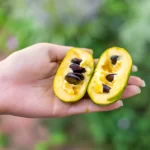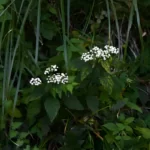Sunflowers, with their bright and large blooms, are a favorite in many gardens. However, like all plants, they are susceptible to pest infestations. Common pests such as aphids, spider mites, and cutworms can significantly damage sunflowers. Timely and effective pest control is essential to ensure the health and beauty of these plants. This article will explore various methods to protect sunflowers from pests, focusing on both natural and chemical solutions.
Identifying Common Pests in Sunflowers
Before taking any pest control measures, it’s important to identify the pests plaguing your sunflowers. Common pests include:
- Aphids: These small, soft-bodied insects are often found in clusters on new growth or the underside of leaves. They can cause leaf curling and stunted growth.
- Spider Mites: These tiny pests, often red or brown, create fine webs on the plants. They can cause yellowing and speckling on leaves.
- Cutworms: These caterpillars feed at night and can cut through young sunflower stems, causing plants to fall over. Each pest presents specific signs and symptoms, such as visible insects, damaged leaves, or weakened plant structures.
Preventive Measures for Pest Control
Effective pest management starts with prevention. Implementing good cultural practices can significantly reduce the risk of pest infestations. This includes:
- Selecting Resistant Varieties: Choose sunflower varieties known for their resistance to pests.
- Maintaining Plant Health: Healthy plants are less susceptible to pests. Ensure adequate sunlight, water, and nutrient supply.
- Regular Monitoring: Regularly inspect your sunflowers for early signs of pests. Early detection makes control more manageable.
- Proper Spacing and Airflow: Ensure that sunflowers are not overcrowded to improve air circulation, which can reduce the likelihood of pest problems.
Natural Pest Control Options
For those preferring organic gardening methods, several natural remedies can effectively control pests:
- Neem Oil Spray: Neem oil is a natural insecticide that can deter various pests. Mix neem oil with water and a mild soap to create an effective spray.
- Soap Spray: A mild solution of water and dish soap can help control aphids and mites. Be sure to use a gentle, non-antibacterial soap.
- Garlic Spray: Garlic has natural insect-repellent properties. Blend garlic cloves with water and let the mixture sit for a few hours before straining and spraying on the plants.
These natural sprays are best used as preventive measures or at the first sign of pest infestation. They are generally safe for the plant and the environment but should be applied in the cooler parts of the day to avoid leaf burn.
Chemical Pest Control Options
In cases where pest infestations are severe, chemical pesticides may be necessary. Here are some options:
- Insecticidal Soaps: These are effective against soft-bodied insects like aphids and can be used safely on sunflowers. They work by breaking down the insect’s outer layer, causing dehydration.
- Pyrethrin-Based Insecticides: Derived from chrysanthemum flowers, these insecticides are effective against a wide range of pests and are less harmful to beneficial insects.
- Systemic Insecticides: These are absorbed by the plant and can provide longer-lasting protection against pests like aphids and mites. However, they should be used sparingly and responsibly due to their potential impact on the environment and non-target organisms.
When using chemical pesticides, it’s crucial to follow the manufacturer’s instructions for application rates and safety precautions. Always wear protective clothing and avoid spraying on windy days to prevent drift.
Integrated Pest Management (IPM) Approach
Integrated Pest Management (IPM) is a holistic approach to pest control that combines cultural, natural, and chemical methods. In an IPM strategy for sunflowers, you might:
- Monitor Regularly: Keep an eye on your sunflowers for early signs of pests.
- Use Cultural Controls: Implement practices like proper spacing, watering, and choosing resistant varieties.
- Apply Natural Remedies First: Use neem oil or soap sprays as your first line of defense.
- Resort to Chemicals if Necessary: If infestations persist, use chemical treatments as a last resort.
By adopting an IPM approach, you can effectively manage pests while minimizing harm to the environment.
Application Tips and Best Practices
Proper application of pest control measures is essential for their effectiveness. Here are some tips:
- Timing: The best time to apply sprays is either early in the morning or late in the evening when the sun is not too intense.
- Coverage: Ensure thorough coverage of the plant, including the undersides of leaves where pests often hide.
- Frequency: Follow the recommended frequency on product labels. Overuse of pesticides can lead to resistance in pests and harm beneficial insects.
- Check Weather Conditions: Avoid spraying on rainy or windy days, as this can reduce the effectiveness of the treatment and increase the risk of chemical drift.
Post-Treatment Care and Monitoring
After applying any pest control measures, continuous monitoring is key. Observe your sunflowers for signs of pest activity reduction and plant recovery. If using chemical treatments, also watch for any adverse reactions in the plant, such as leaf burn or discoloration. Regularly check for new growth, as young shoots and leaves are often more susceptible to pest attacks.
Balancing Pest Control with Pollinator Safety
Sunflowers are attractive to pollinators like bees and butterflies. When implementing pest control measures, it’s crucial to consider the safety of these beneficial insects. Avoid spraying when flowers are in full bloom and pollinators are active. If chemical treatments are necessary, choose products that are less harmful to pollinators, and apply them during times when these insects are less active, such as early morning or late evening.
Eco-Friendly and Sustainable Practices
In line with sustainable gardening practices, consider the long-term health of your garden ecosystem. Encourage natural predators of common pests, such as ladybugs for aphids. Planting a diversity of species can also create a more balanced environment, reducing the likelihood of severe pest infestations.
Conclusion
Managing pests in sunflowers requires a balanced approach, considering both the immediate need to control infestations and the long-term health of the garden ecosystem. Whether through natural remedies, chemical treatments, or a combination of methods, effective pest management is vital for the health and beauty of your sunflowers. By adopting an integrated and mindful approach to pest control, you can enjoy the splendor of these magnificent flowers while maintaining a healthy and vibrant garden.



